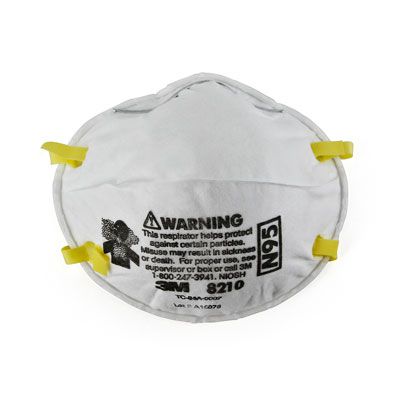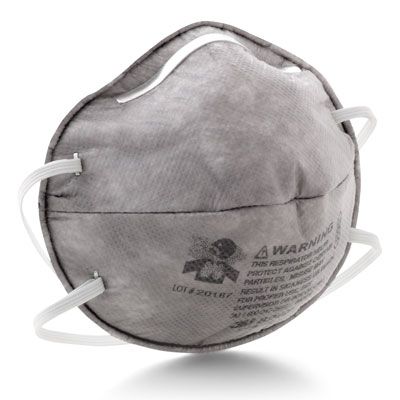-

Powecom Face Mask
$23.89Supplied in: Box of 10 Pieces -

3M™ 9211 Aura™ N95 Particulate Respirator with Valve
$59.99
$41.59
Supplied in: Box of 10 Pieces -

3M™ 8210 Series N95 Particulate Respirator 70070614394
$27.96Supplied in: Box of 20 Each -

3M™ 8511 N95 Particulate Respirator 70070757557
$61.99
$49.99
Supplied in: Box of 10 Each -

3M™ 8247 R95 Particulate Respirator
$125.79Supplied in: Each
Disposable Respirators
For everyday tasks requiring protection against smoke, dust, and other respiratory irritants, disposable respirators are the equipment of choice. A standard disposable respirator should be designed for ease of use and maximum protection. A respirator that has a filter efficiency of N95 Respirators 95% or greater is ideal. It's wise consider the weight of the equipment when choosing one for your workforce, as heavy respirators can contribute to fatigue, especially when used for extended periods of time.
Due to their convenience and effectivity, disposable respirators are the more common form of respiratory protection equipment. However, being disposable in nature, some important factors should be remembered:
1. Do not use disposable respirators in hazardous environments as these are not tight-fitting.
2. Only use respirators in the environment they were meant to be used in. If you have an N95 respirator, only use this in oil-free environments; for protection against oil-based contaminants, choose an R95 or a P95 respirator.
3. Since using a respirator can make breathing more difficult, people with breathing problems or respiratory illnesses such as emphysema, bronchitis, or even an existing heart condition should first consult with a physician.
4. Once soiled, disposable respirators should be discarded as these cannot be effectively cleaned.
5. Once a disposable respirator becomes ineffective, i.e. it becomes increasingly difficult to breathe, it should be replaced.

